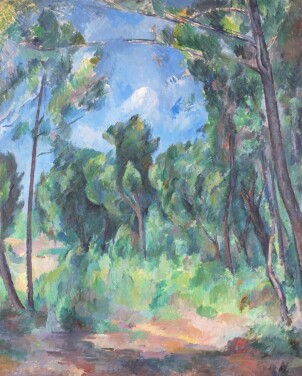Works by Paul Cézanne at Sotheby's
Paul Cézanne Biography
Born in Aix-en-Provence, painter Paul Cézanne (1838–1906) laid the foundations for the transition from Impressionism to new lines of artistic inquiry in the early 20th century. Together, his simplification of naturally occuring forms to their geometric essentials; his use of short, hatched brushstrokes to model invidual masses and spaces; and his rendering of slightly different yet simultaneous visual perceptions paved the way for both Cubism, Fauvism and abstract art.
After studying painting in his hometown and Paris, Cézanne first painted pictures with romantic or classical themes, dark colors and expressive brushstrokes, such as in Portrait of a Man with a Blue Cap (1865–66). In the early 1870s, influenced his friend, Impressionist Camille Pissaro who, like him, had settled just outside of Paris, the artist began painting directly from nature and in more brilliant tones. The Bathers (1874–75) illustrates this new style. By the mid-1870s, Cézanne was experimenting with subtle tonal variations to create dimension in his objects: already evident in Still Life with Jar, Cup and Apples (circa 1877), this style was fully mastered in Still Life with Apples and a Pot of Primrose (1890). From 1880s, his paintings reflected his permanent return to Provence, whether through landscapes such as the early Mont Sainte-Victoire and the Viaduct of the Arc River Valley (1882–85) or the late Mont Sainte-Victoire (1904), along with characters such as The Card Players (1890–95). Nearly two decades after his last exhibition with the Impressionists, Paris dealer Anbroise Vollard gave Cézanne his first one-man show in 1895, sparking growing public interest and the admiration of a new generation of painters.
Read Less











